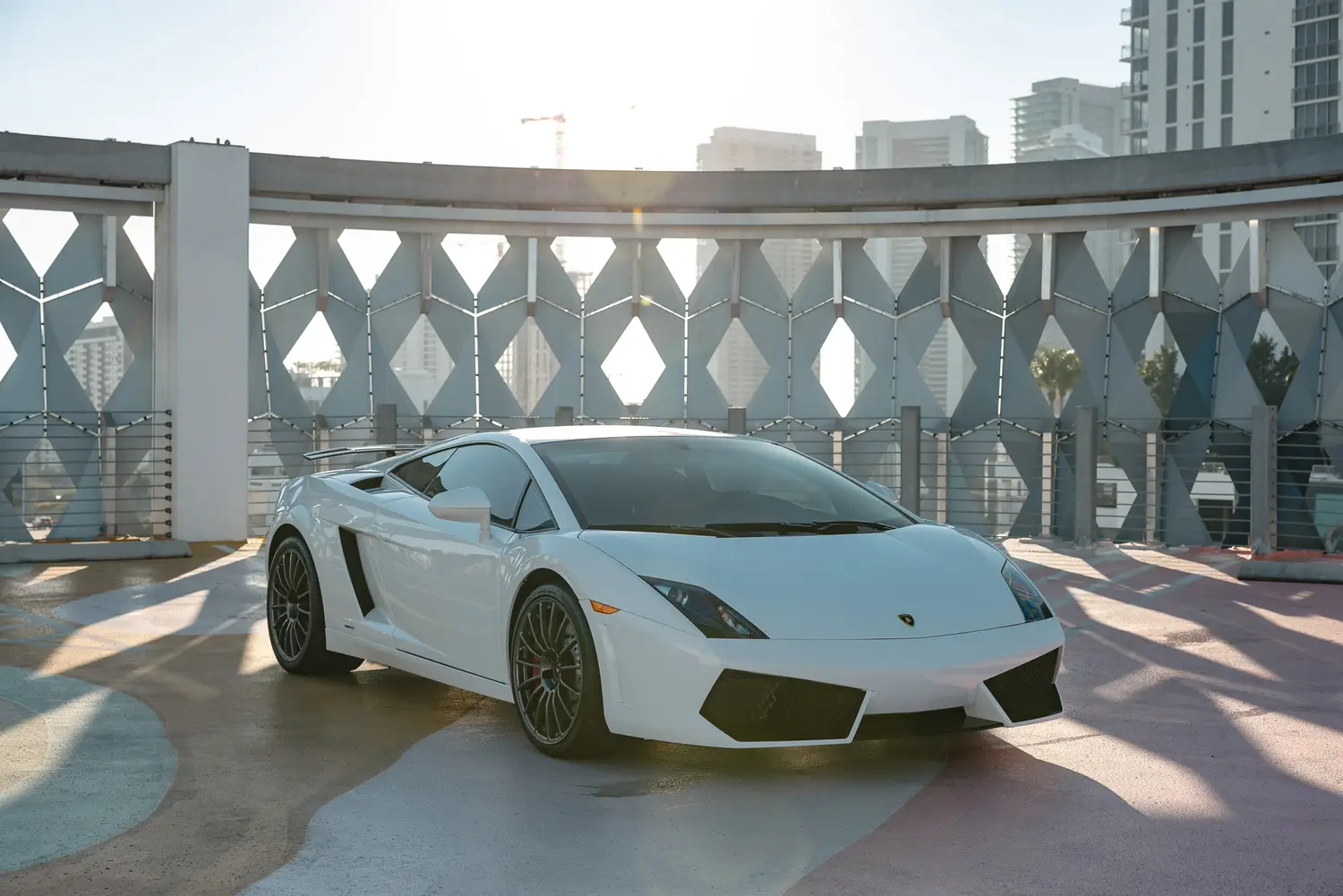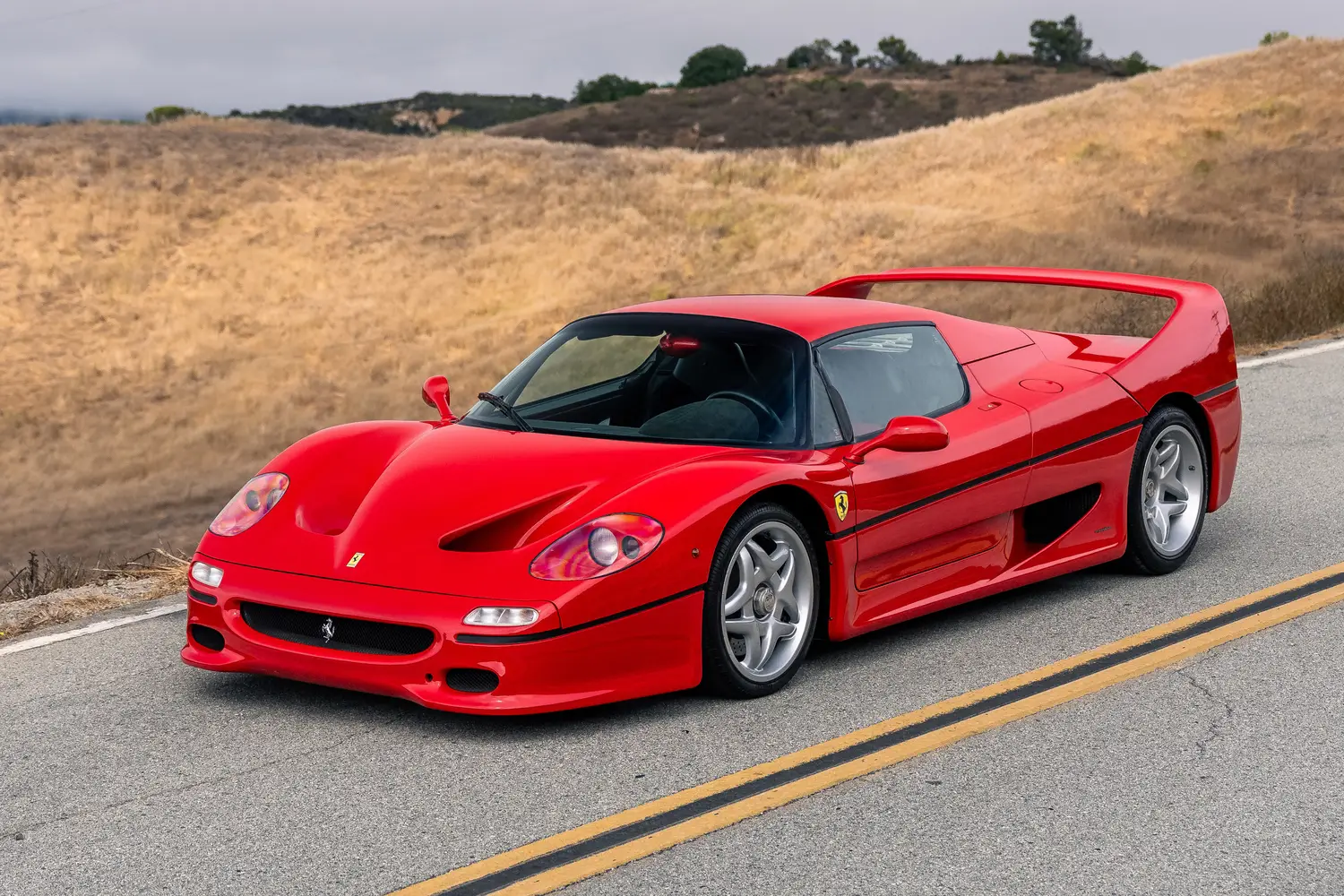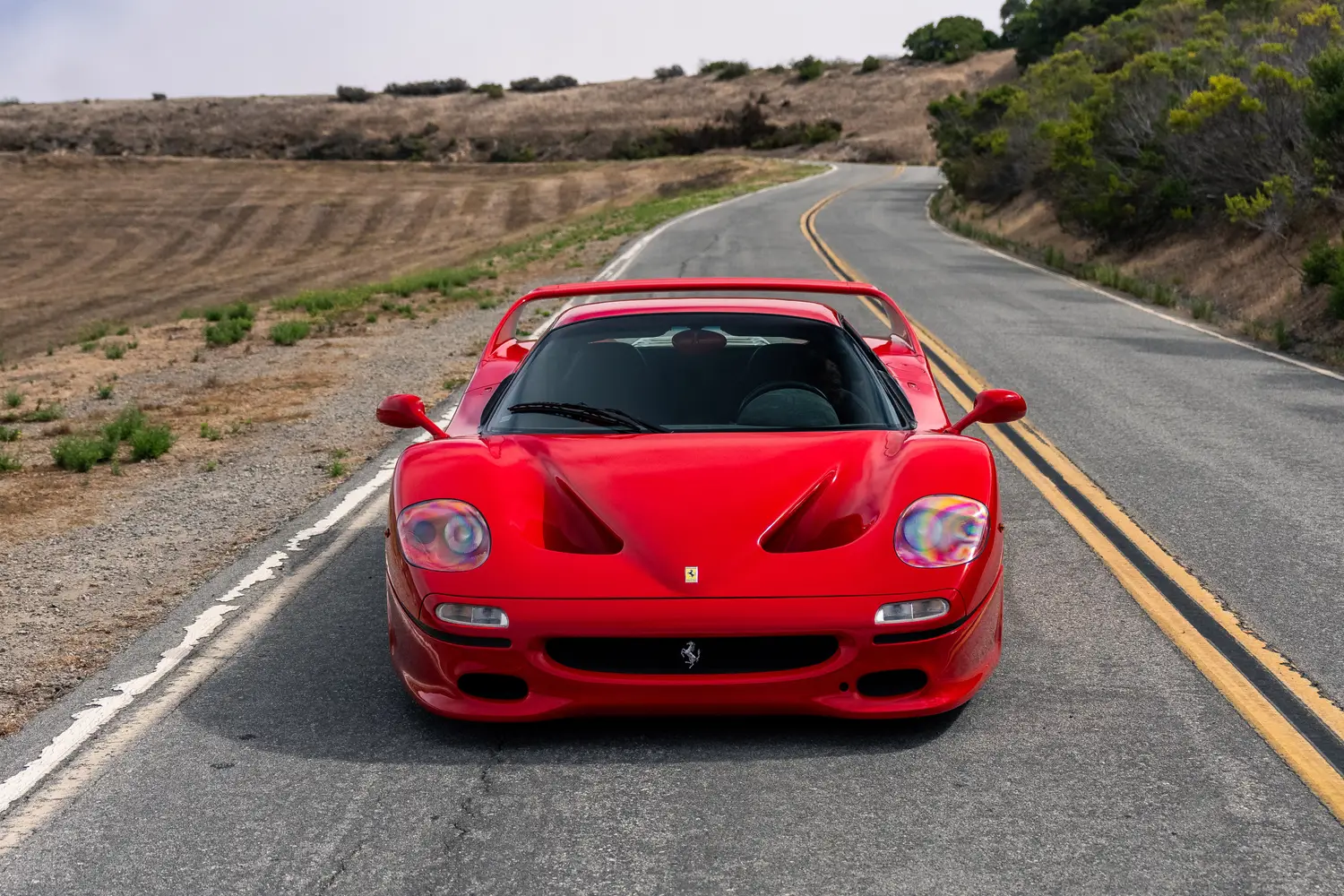1997 Ferrari F50
1 of 31 in Giallo Modena
1 of 349 total F50 examples
Books & tools
European example
Year
1997
Brand
Ferrari
Model Variant
F50
Current Mileage
9,000


chasis
ZFFTA46B000106535
Engine capacity
4.7 liter, 5-valve, Tipo F130B V12 / 512BHP
exterior color
Giallo Modena
Interior color
Nero
transmisSion
Six Speed Manual
Top speed
202MPH
Designer
Lorenzo Ramaciotti and Pietro Camardella for Pininfarina
Years produced
1995 - 1997
Total production
349
More details
Etc. Seen on Nov 1996 at the factory. Sold new to Finanzaria Terna SpA, Brascia.
Leased to Immobiliare San Marino of Brescia, Italy. Salon Prive Concours d’Elegance.
Third in the line of Ferrari Supercars is the phenomenal F50. Successor to the 288
GTO and F40, the F50 was the embodiment of Ferrari Formula One technology from
the early 90s era when the screaming V12 Ferrari engines still ruled and the Scuderia
returned to prominence, challenging for World Championships for drivers and
manufacturers.
In fact, the engine in the F50 is a 4.7 liter naturally aspirated Tipo 130B 60-valve
V12 exactly as used in the 1990 641 Formula One car which took Scuderia Ferrari
driver Alain Prost to the brink of the World Championship. The same engine was later
used in the Ferrari 333-SP in the American based IMSA World Sports Car
Championship (WSC) category which scored important victories in the 24 Hours of
Daytona and 12 Hours of Sebring and shorter sprint events.
The American debut of the F50 happened at Texas World Speedway just after the
completion of an IMSA WSC event as the first example was delivered to long time
Ferrari racing entrant Giuseppe Risi, owner of Ferrari of Houston. Risi and notable
customer Paul Frame put their new F50s through their paces on the Central Texas
combined oval and road course for invited clients and media members in September of
1995.
With the F50’s racing DNA under the bonnet established, Ferrari turned to long time
design partners Pininfarina and Lorenzo Ramaciotti was tasked with sculpting the F50
body which was a fresh departure from its older brother, the F40. The F50 was a
strong, dramatic design, a pointed nose atop the front bonnet, much in the mode of
Formula One car noses of the time, long swooping lines with side air inlets and
culminating with a huge integrated one-piece rear wing at the back.
The first V12 Ferrari Supercar was an instant sensation, the direct correlation to its
racing brothers and was the last of the lineup to be fitted with a 6-speed manual
transmission which is about the only mechanical aspect on the car that doesn’t share
with its Formula One brothers.
The over-the-top styling of the F50 was introduced directly against competing market
segment cars, such as Jaguar XJ220 and McLaren F1 with each vying for title of
“world’s fastest production car” and most radical road going looks.
The Ferrari F50 is the embodiment of the Ferrari Supercar, over the top styling,
screaming V12 engine, exclusive numbers all of which commemorated Ferrari’s fiftieth
anniversary, it is instantly recognizable as the one of the world’s most famous and
desirable cars which will always draw superlatives.
Leased to Immobiliare San Marino of Brescia, Italy. Salon Prive Concours d’Elegance.
Third in the line of Ferrari Supercars is the phenomenal F50. Successor to the 288
GTO and F40, the F50 was the embodiment of Ferrari Formula One technology from
the early 90s era when the screaming V12 Ferrari engines still ruled and the Scuderia
returned to prominence, challenging for World Championships for drivers and
manufacturers.
In fact, the engine in the F50 is a 4.7 liter naturally aspirated Tipo 130B 60-valve
V12 exactly as used in the 1990 641 Formula One car which took Scuderia Ferrari
driver Alain Prost to the brink of the World Championship. The same engine was later
used in the Ferrari 333-SP in the American based IMSA World Sports Car
Championship (WSC) category which scored important victories in the 24 Hours of
Daytona and 12 Hours of Sebring and shorter sprint events.
The American debut of the F50 happened at Texas World Speedway just after the
completion of an IMSA WSC event as the first example was delivered to long time
Ferrari racing entrant Giuseppe Risi, owner of Ferrari of Houston. Risi and notable
customer Paul Frame put their new F50s through their paces on the Central Texas
combined oval and road course for invited clients and media members in September of
1995.
With the F50’s racing DNA under the bonnet established, Ferrari turned to long time
design partners Pininfarina and Lorenzo Ramaciotti was tasked with sculpting the F50
body which was a fresh departure from its older brother, the F40. The F50 was a
strong, dramatic design, a pointed nose atop the front bonnet, much in the mode of
Formula One car noses of the time, long swooping lines with side air inlets and
culminating with a huge integrated one-piece rear wing at the back.
The first V12 Ferrari Supercar was an instant sensation, the direct correlation to its
racing brothers and was the last of the lineup to be fitted with a 6-speed manual
transmission which is about the only mechanical aspect on the car that doesn’t share
with its Formula One brothers.
The over-the-top styling of the F50 was introduced directly against competing market
segment cars, such as Jaguar XJ220 and McLaren F1 with each vying for title of
“world’s fastest production car” and most radical road going looks.
The Ferrari F50 is the embodiment of the Ferrari Supercar, over the top styling,
screaming V12 engine, exclusive numbers all of which commemorated Ferrari’s fiftieth
anniversary, it is instantly recognizable as the one of the world’s most famous and
desirable cars which will always draw superlatives.
Read more
See less
















No items found.

























.webp)
